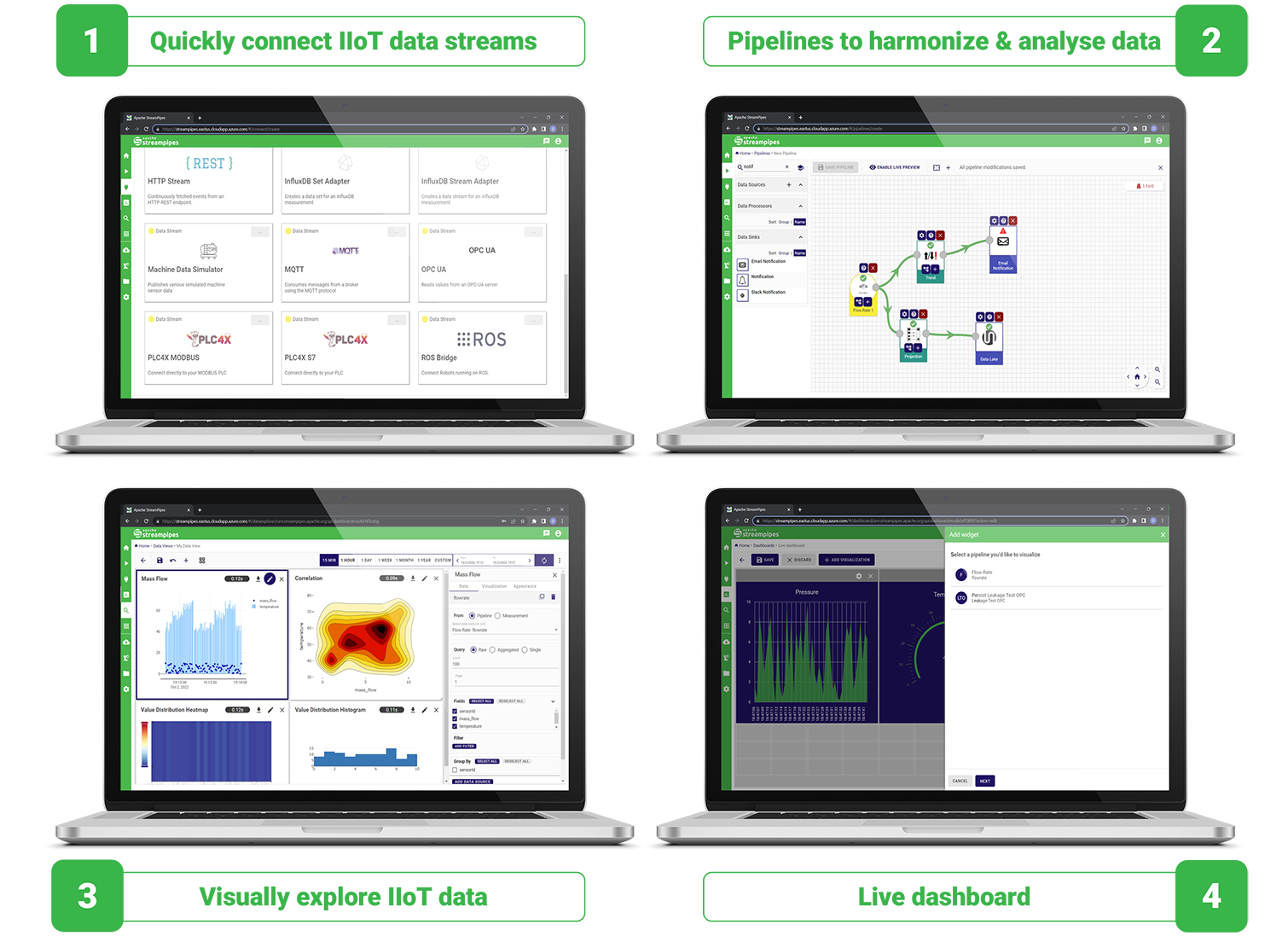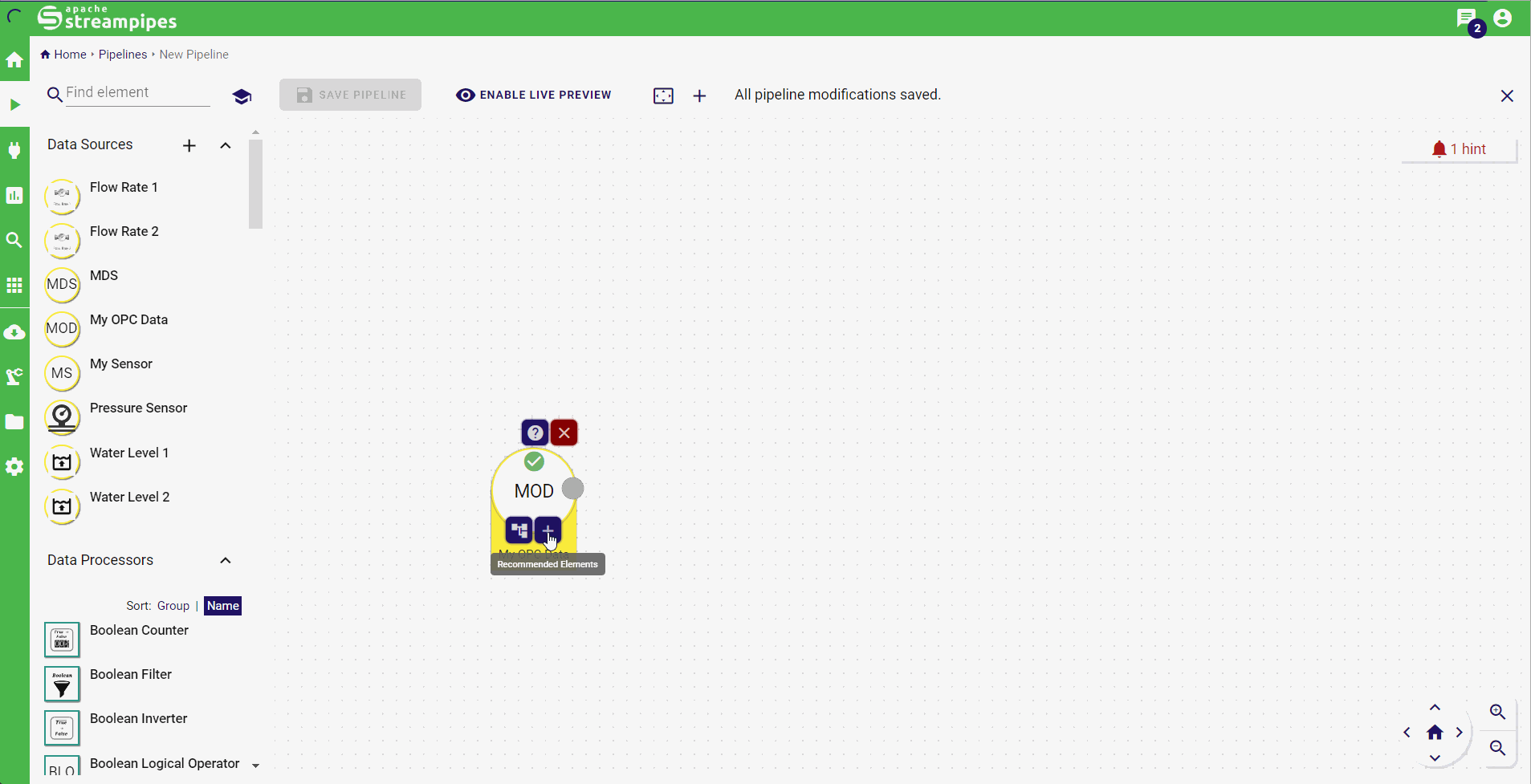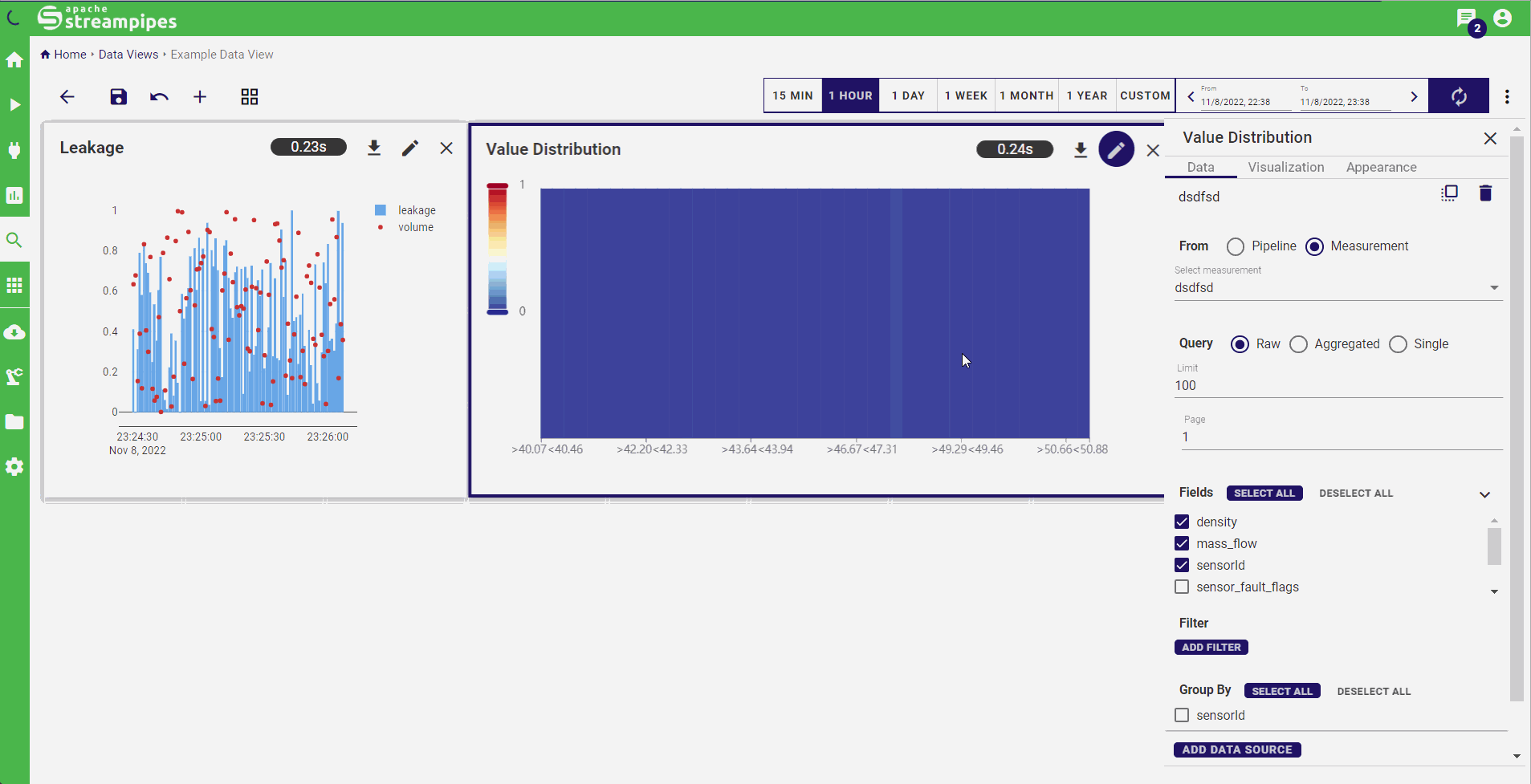StreamPipes is a self-service (Industrial) IoT toolbox to enable non-technical users to connect , analyze and explore IoT data streams.
- About Apache StreamPipes
- User interface
- Installation
- Documentation
- Building StreamPipes
- Pipeline Elements
- Extending StreamPipes
- Bugs and Feature Requests
- Get help
- Contribute
- Feedback
- License
Apache StreamPipes makes industrial data analytics easy!
StreamPipes is an end-to-end toolbox for the industrial IoT. It comes with a rich graphical user interface targeted at non-technical users and provides the following features:
- Quickly connect >20 industrial protocols such as OPC-UA, PLCs, MQTT, REST, Pulsar, Kafka and others.
- Create data harmonization and analytics pipelines using > 100 algorithms and data sinks to forward data to third-party systems.
- Use the data explorer to visually explore historical data with many widgets tailored for time-series data.
- A live dashboard to display real-time data from data sources and pipelines, e.g., for shopfloor monitoring.
StreamPipes is highly extensible and includes a Java SDK to create new
pipeline elements and adapters. Python support is available in an early development stage - stay tuned!
Pipeline elements are standalone microservices that can run anywhere -
centrally on your server or close at the edge.
You want to employ your own machine learning model on live data?
Just write your own data processor and make it reusable as a pipeline element.
Besides that, StreamPipes includes features for production deployments:
- Assign resources such as pipelines, data streams and dashboards to assets for better organization
- Monitoring & metrics of pipelines and adapters
- Built-in user and access rights management
- Export and import resources
- Connect data from an OPC-UA server following a three-step configuration process:
- Create a pipeline to detect a continuous decrease using a trend detection data processor and a
Notificationsink:
- Visually analyze data using the data explorer:
The quickest way to run StreamPipes including the latest extensions (adapters, pipeline elements) is by using our Docker-based installation & operation options, namely:
- StreamPipes Compose - The User's Choice
- StreamPipes CLI - The Developer's Favorite
- StreamPipes k8s - The Operator's Dream
Important
StreamPipes CLI & k8s are highly recommended for developers or operators. Standard users should stick to StreamPipes Compose.
Please follow the instructions provided in the corresponding README.md to get started.
For a more in-depth manual, read the installation guide.
Note
TL;DR: Download the latest release, switch to the installer/compose directory and run docker-compose up -d.
The full documentation is available here.
Quick Links:
To properly build the StreamPipes core, the following tools should be installed:
- Java 17 JDK (We officially only support Java 17, JDKs above 17 might work as well, but we don't provide any guarantee)
- Maven (tested with 3.8)
- NodeJS + NPM (tested with v12+/ v6+)
- Docker + Docker-Compose
To build the core project, do the following:
mvn clean package
To build the ui, switch to the ui folder and perform the following steps:
npm install
npm run build
To start StreamPipes, run docker-compose up --build -d from the root directory.
You can also use the installer or CLI as described in the Installation section.
StreamPipes includes a repository of extensions for adapters and pipeline elements:
- Connect adapters for a variety of IoT data sources as well as
- Data Processors and Data Sinks as ready-to-use pipeline elements.
The source code of all included pipeline elements and adapters can be found here.
You can easily add your own data streams, processors or sinks. A Java-based SDK can be used to integrate your existing processing logic into StreamPipes. Pipeline elements are packaged as Docker images and can be installed at runtime, whenever your requirements change.
👉 Check our developer guide.
If you've found a bug or have a feature that you'd love to see in StreamPipes, feel free to create an issue on GitHub:
👉 Bugs 👉 Feature requests
If you have any problems during the installation or questions around StreamPipes, you'll get help through one of our community channels:
Or directly subscribe to users-subscribe@streampipes.apache.org!
👉 And don't forget to follow us on Twitter!
We welcome all kinds of contributions to StreamPipes. If you are interested in contributing, let us know! You'll get to know an open-minded and motivated team working together to build the next IIoT analytics toolbox.
Here are some first steps in case you want to contribute:
- Subscribe to our dev mailing list dev-subscribe@streampipes.apache.org
- Send an email, tell us about your interests and which parts of StreamPipes you'd like to contribute (e.g., core or UI)!
- Ask for a mentor who helps you to understand the code base and guides you through the first setup steps
- Find an issue on GitHub which is tagged with a good first issue label
- Have a look at our developer wiki to learn more about StreamPipes development.
Have fun!
We'd love to hear your feedback! Subscribe to users@streampipes.apache.org
















